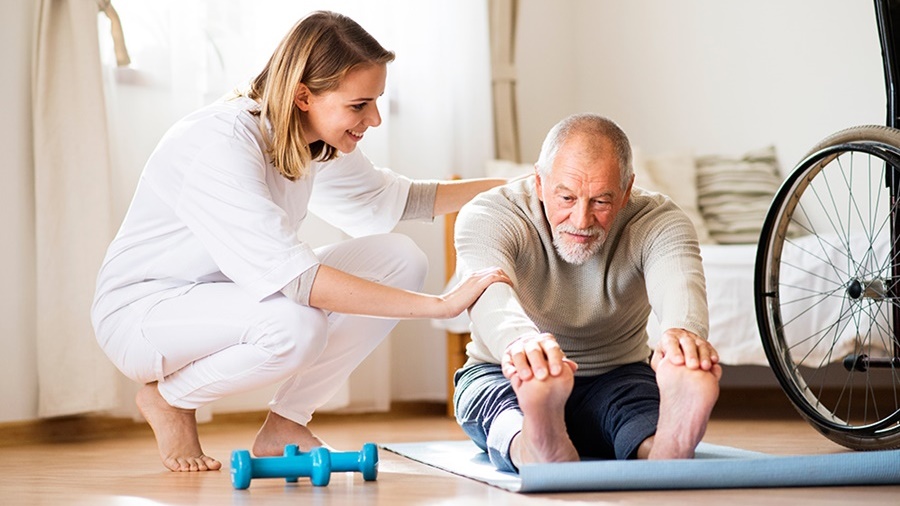GERIATRIC PHYSIOTHERAPY
Geriatric Physiotherapy
Physiological Process
Aging is a natural physiological process that we will all go through sooner or later, however, there are ways to prevent this natural wear and tear. Moderate physical activity, for example, is one of the best ways to age healthily.
In this context, physiotherapy plays a key role in the prevention and treatment of age-related injuries or pathologies . This branch of physiotherapy that is dedicated to patients over 65 years of age is called geriatric.
What is geriatric physiotherapy?
Geriatric physiotherapy is an essential field when treating various diseases typical of aging, such as pain, loss of balance, joint functionality, elasticity or muscle mass.
The set of geriatric techniques are aimed both at the prevention and the treatment of different pathologies resulting from age, which cover a wide range of diseases.
When is geriatric physiotherapy applied?
Within this branch of physiotherapy, there are a series of common pathologies that can be treated effectively, delaying their progress.
How Can Therapy Help?
- Bone diseases, such as osteoporosis or arthritis.
- Kidney diseases, such as urinary and fecal incontinence.
- Age-related injuries, joint replacements or fractures are common
- Coordination and balance disorders.
- Functional limitations related to mobility.
- Heart and lung diseases.
Applications of geriatric physiotherapy
As far as possible, geriatric physiotherapy is responsible for reducing pain, improving balance, re-educating gait, improving joint sensitivity and functionality, recovering lost movement, strength, elasticity and muscle flexibility. The physiotherapist is in charge of designing a personalized treatment, taking into account the condition and needs of each patient.
Benefits of geriatric physiotherapy
Depending on the objectives that the physiotherapist wants to pursue with each patient, geriatric physiotherapy will have certain benefits. Generally, these benefits can be seen both physically and psychologically. Some of the most common are:
- Combat lack of activity and improve your physical mobility.
- It helps to regain flexibility and muscle mass, in addition to strengthening it.
- It helps to regain flexibility and muscle mass, in addition to strengthening it. ...
- Maintains autonomy of movements.
- Works sensitivity and joint ability.
- Improve postural control.
- It reduces pain and can delay the progression of the disease.
- Improves coordination and balance, reducing the risk of injury from falls.

Contact us to arrange an appointment with our professionals
+34 654 65 99 58


